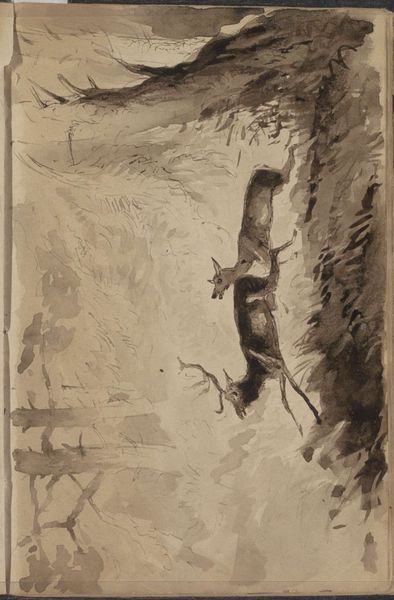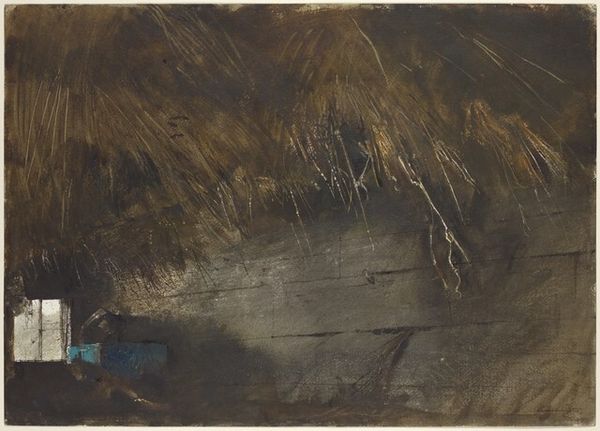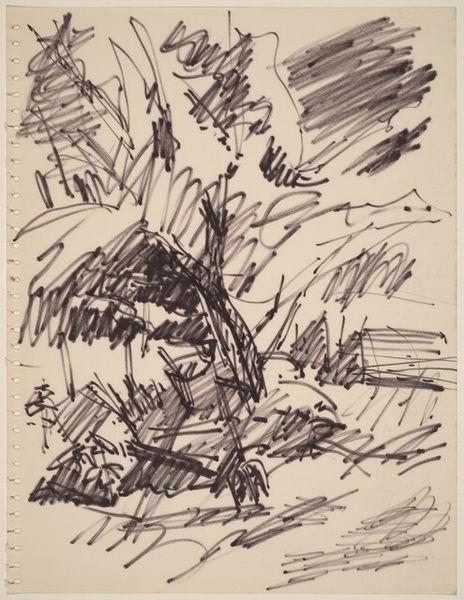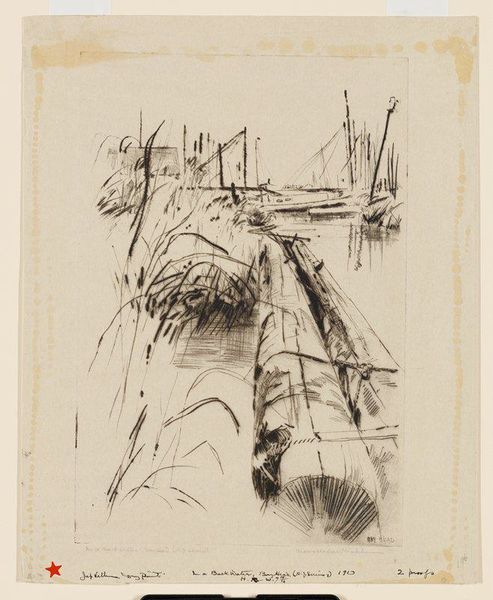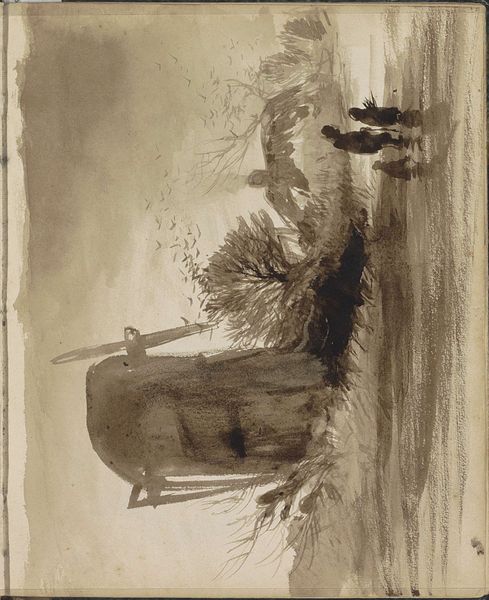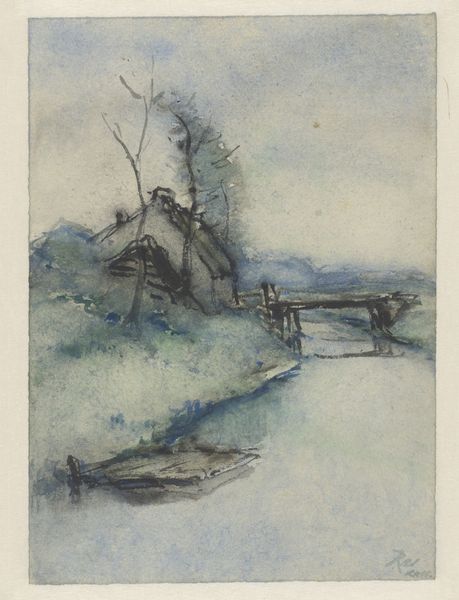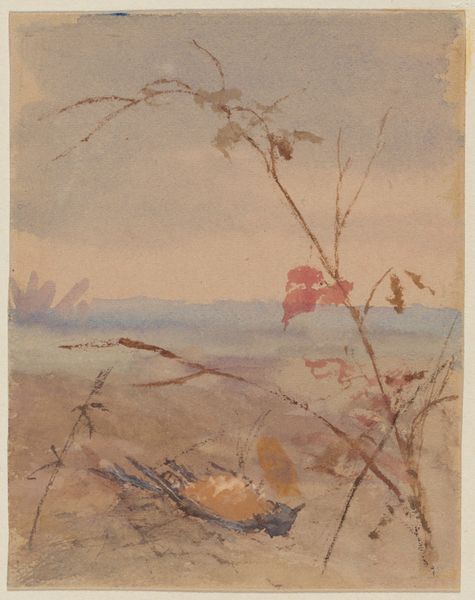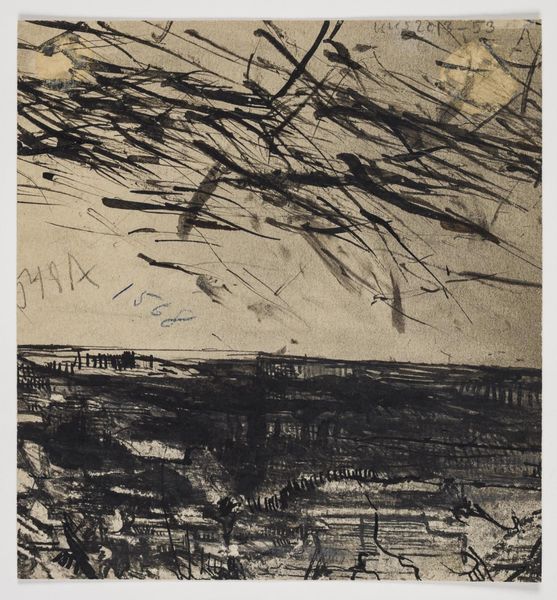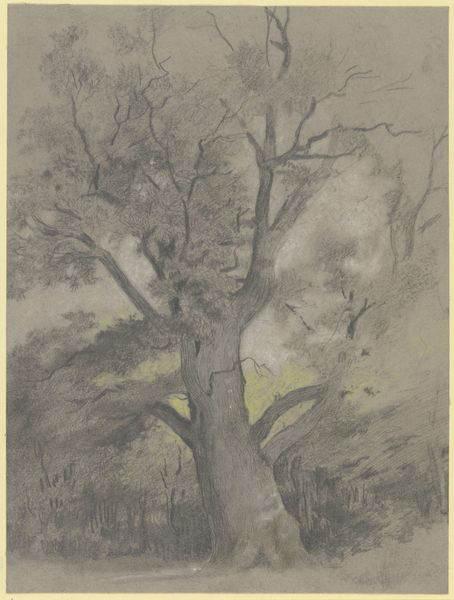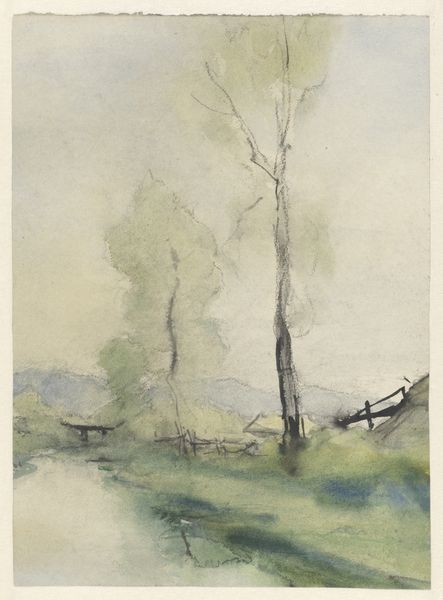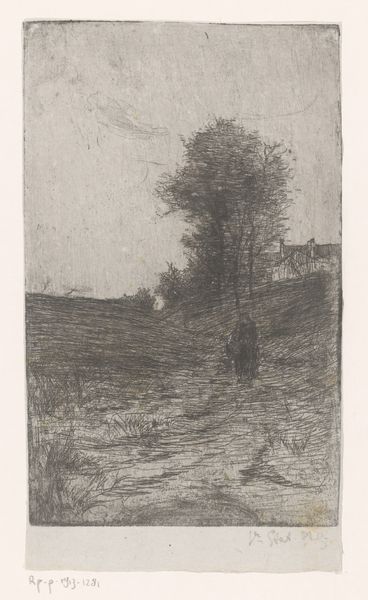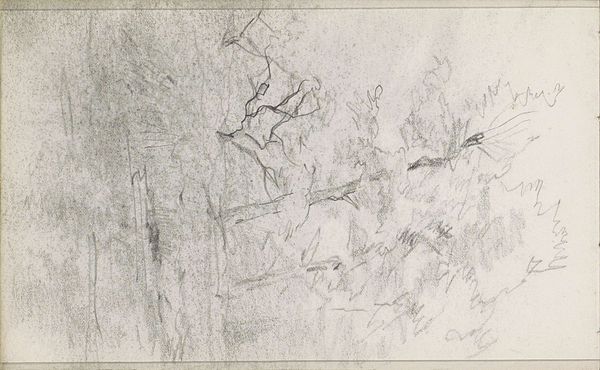
Dimensions: sheet: 12 x 7 11/16 in. (30.5 x 19.5 cm)
Copyright: Public Domain
Curator: Here we have Victor Hugo's "The Hanged Man," dating from around 1850 to 1865, executed in ink and watercolor. Editor: Stark, isn't it? Very desolate. The composition pulls you right in—that stark black gallows against the washed-out background. Curator: Hugo was quite the political figure. This piece surely speaks to his stance against capital punishment, the macabre imagery acting as a stark indictment of state-sponsored violence. We see similar themes across his literary works, particularly resonating during the Second Republic. Editor: Absolutely. And you feel that history in the very making. Look at the pooling of the ink, the almost violent application on the gallows. It wasn't created for pleasantries; the artistic labor really underscores the grim subject matter. Were these materials readily available to him during his exile? It adds another layer if so. Curator: He was in exile during much of this period, yes. He likely used what was available to him in the Channel Islands. What interests me is how Hugo, primarily known as a writer, engaged with visual art to extend his political reach. This drawing allows for immediate, gut-level engagement beyond the written word. Editor: That restricted material availability probably fuelled that rawness we were talking about, that powerful impact. Also note the swarming birds: nature indifferent to man's cruelty, perhaps? Curator: Precisely, the natural world persisting, even thriving, alongside human suffering. It echoes broader Romantic themes too: nature as a witness and a force that dwarfs human endeavors. Editor: It does makes you think about the societal cost when even intellectuals, like Hugo, find themselves driven to repurpose and reuse accessible matter for art in such turbulent times. Curator: Indeed, it is a reflection of both his personal struggles and a broader societal critique, a visceral reaction captured in ink and watercolor. Editor: For me, understanding the circumstances, it highlights not just what Hugo depicted, but how constraints drove a different kind of artistic output that really amplifies his message. Curator: Thank you. Hopefully this gives everyone listening insight on Hugo's process of politicizing Romanticism through visual works of art. Editor: It all underscores that sometimes the most impactful statements are wrought from the starkest, rawest means at hand.
Comments
No comments
Be the first to comment and join the conversation on the ultimate creative platform.
